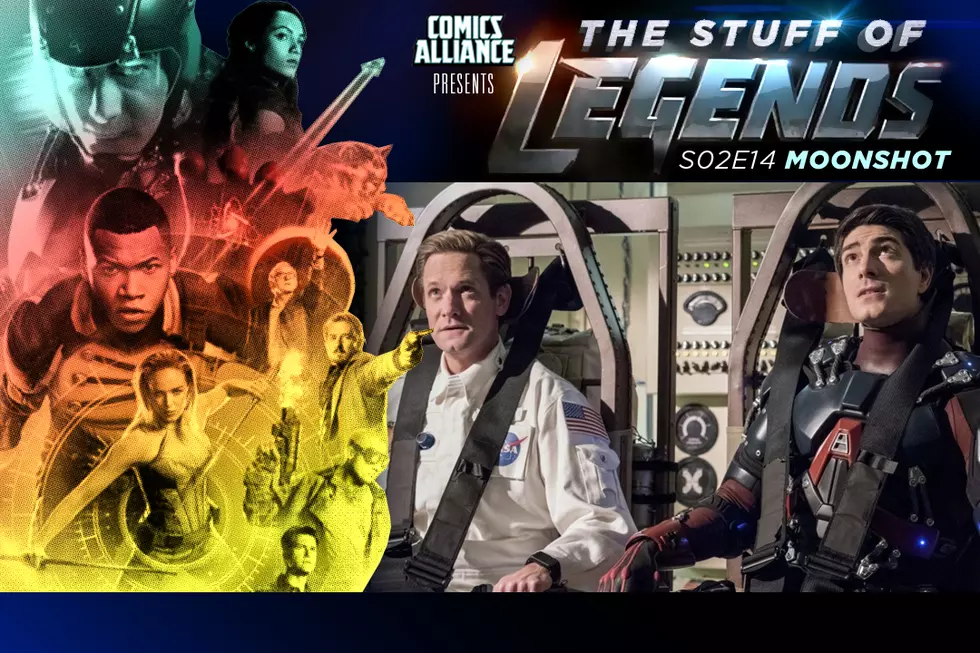
GET TO THE FLASHPOINT Week 4: Lois Lane, The Outsider, Kid Flash, Reverse Flash

Flashpoint is DC Comics' summer event of 2011 that promises to change the DC Universe unrecognizably until the event's climactic finale, when the DC Universe will instead be left changed somewhat recognizably. In support of the event, DC is releasing 60+ issues of comic books across 22 titles in just three months. You'd have to be deranged to expend the time, effort and money to follow it all, but fortunately for you, ComicsAlliance has never been particularly whole in the sanity department. Over the next few months we'll be reading every single Flashpoint tie-in so we can tell you what you need to know. There are bound to be some good ones and we'll recommend them to you. The rest of them may contain some facts you'll need to make sense of what's going on in the overall Flashpoint, and we'll help you piece that together as well.
This week in Get to the Flashpoint, we look at
- Lois Lane and the Resistance by Dan Abnett, Andy Lanning, Eddie Nunez and Don Ho
- The Outsider by James Robinson and Javi Fernandez
- Kid Flash Lost by Sterling Gates, Oliver Nome and Trevor Scott
- Reverse Flash one-shot by Scott Kolins and Jose Gomez
LOIS LANE AND THE RESISTANCE

Lois Lane and the Resistance is better than anything that came out last week. Once again writing duties on a Flashpoint book fall to the accomplished team of Abnett and Lanning, who this time give us a third perspective on the Amazon-Atlantis war through the eyes of ace Daily Planet reporter Lois Lane.As the story opens, Lois is complaining to Perry White about how she's been assigned to cover fashion week in Paris in the midst of a global war. They're interrupted first interrupted by a tipsy Jimmy Olsen and then by a massive tidal wave triggered by Aquaman that's sinking all of Western Europe. Lois manages to escape to high ground, although in the process her single strap high-fashion dress gets ripped and torn despite the fact that none of the other survivors' clothes have so much as a scratch on them. Oh, and Jimmy drowns in the escape.
That's right, Flashpoint killed Jimmy Olsen.
Lois is rescued by the Amazons and brought to Great Britain, where male and female survivors are separated and the women are sent to Amazonian reeducation camps by guards with hips far wider than their waists, all of which are fully displayed. It's difficult for me to take an Amazonian guard seriously when she says "Women, after all, are made stronger by the absence of men" despite the fact that you'd think an all-female society wouldn't create an official military uniform that intentionally shows off quite so much cleavage. If the situation was reversed and men kicked all the women out of society, I doubt we'd adopt a uniform consisting of a metal codpiece, boots, a helmet, and nothing else. I'm pretty certain we'd choose something loose-fitting and comfortable. And if we didn't, I'd have serious complaints to bring to the rulers of the newly risen manarchy.
Lois soon discovers that Jimmy was actually an agent of National Security Advisor Cyborg, and now that he's dead she's been asked to take over and gather whatever information she can on the Amazons by playing nice and trying to be an eager recruit into their new regime. This proceeds well until Lois is scheduled to undergo a dangerous medical procedure with a high failure rate that would convert her into a metahuman. She escapes and makes contact with the resistance but is soon tracked down by Artemis and Hawkgirl, which is the cliffhanger leading into issue two.
Given that the book is titled "Lois Lane and the Resistance" instead of the perhaps better selling "Lois Lane and the All-Female Detention Facility" I'm going to go ahead and assume she ends up being rescued from her current predicament and meets more of the resistance. And I'm hoping that when that happens the book stops info-dumping so heavily and just lets a story develop, because this could turn into a good series by the end.
THE OUTSIDER

James Robinson and Javi Fernandez's The Outsider is another book that drops a lot of backstory up front but could turn out to be worth it. The mysterious Outsider, Michael Desai, is the self-made most powerful man in India with a massive, hi-tech corporate empire under his control. The Outsider's birth in 1960 created an enormous sinkhole that destroyed Chandigarh, India, killing hundreds of thousands of people and leaving the small, hairless, stone-skinned baby the only survivor. His rise to power has given him a prominent place in the world, as he's one of the figures Cyborg turned to in Flashpoint #1 in his search for allies to stop the Atlantean-Amazon war.
But he's also made enemies. The Outsider's attacked in his headquarters by Mr. and Mrs. Terrific and Rising Sun, out for revenge after he had them wrongfully imprisoned. Outsider brutally kills them all and then sets about trying to discover who let them out.
It's an interesting setup, and the Outsider, who most closely visually resembles Metamorpho but seems to have no other connections to the character, is certainly a mysterious figure. Writer James Robinson is certainly being ambitious with this series, but not only is it a story that doesn't really fit clearly into the larger tale of Flashpoint, it's also one that doesn't seem well suited to the three-issue mini format of the tie-ins.
Oh, and one last thing about The Outsider. It's revealed in a throwaway line that Alfred Pennyworth was a spy for Desai who was caught and then beheaded when he attempted to infiltrate Amazon-controlled Great Britain. So in the same week, Flashpoint killed both Alfred and Jimmy Olsen. Before the event ends I expect to see Krypto taken out behind a barn and shot with a glowing green shotgun.
KID FLASH LOST

As this Flashpoint tie-in mini begins, Bart, aka Kid Flash, realizes he's been trapped in a virtual reality world because the Barry Allen he's interacting with is actually emoting, which is highly uncharacteristic of the the Silver Age Flash. Bart then awakens to discover he's hooked up to some kind of life-preservation system that looks remarkably like those seen in The Matrix. It turns out he's in the future of the Flashpoint universe, where machines led by Brainiac that look quite a bit like the ones from The Matrix have taken over and imprisoned all the humans in tubes a lot like in The Matrix. Brainiac is extracting energy from Bart in a way vaguely reminiscent of . . . you know, The Matrix. Bart is rescued by Hot Pursuit, a woman named Patty Spivot, whose time-traveling motorcycle is Kid Flash's only hope of not fading away into nothingness as the time stream corrects itself. It's an explicit reference to Back to the Future.
To its credit, Kid Flash Lost takes my opportunities to call attention to its obvious influences and even has a few laughs about it. But it's one thing to lift plots and visuals from other franchises in order to tell an exceptional story, and Kid Flash seems to have taken those ideas and headed in a fairly generic direction with them. Although I hereby reserve the right to change my mind if Kid Flash Lost starts taking from even more sci-fi franchises and by the end of issue three is an insane pastiche of Terminator, Bill & Ted's Excellent Adventure, Akira and Krull, because that would be kind of great.
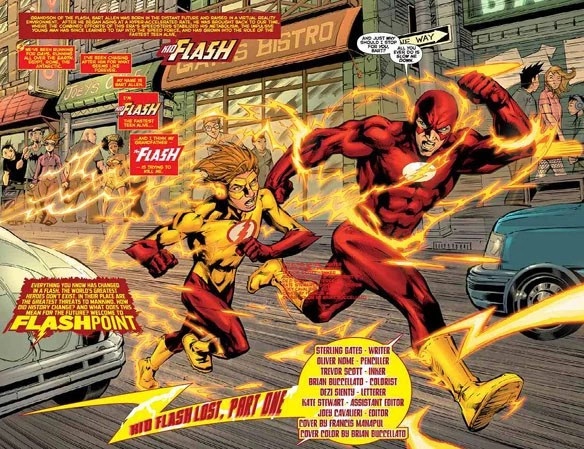

REVERSE FLASH
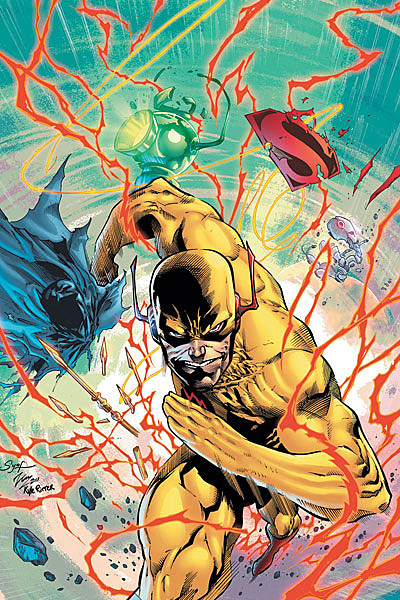
You would think that a book about the villain supposedly responsible for the entire Flashpoint event, with cover art depicting the symbols of DC's greatest heroes bloody and torn in his wake, would touch on his role in disrupting the DC Universe and creating the alternate reality against which Flashpoint is set. And you'd be completely wrong about that.
Reverse Flash has nothing to do with Flashpoint. It simply restates the origin of Eobard Thawne, the Reverse Flash, how his desire to become the Flash of the future led him to conflict with Barry Allen, and how he then sought to use his time traveling powers to destroy Barry's life. Thawne is shown doing everything from attempting to disrupt the accident that made Barry the Flash to threatening Barry's loved ones and to kidnapping Barry's childhood friends to remove them from the timeline. Nothing works. On the last page, Thawne appears at the doorstep of young Barry Allen's home, about to murder Barry's mother and frame his father.
The thing is, these are all stories about Thawne that have already been told. There's no connection whatsoever to Flashpoint here because we already know that whatever changes Thawne made to create the Flashpoint universe resulted in Barry's mother being alive. It's almost like this book was created with absolutely no knowledge of what would be happening in Flashpoint at all. And if this book existed as a way to remind readers of Thawne's background, given the important role he plays in the event, that's fine -- except that we haven't seen any of him in the other Flashpoint books aside from a few streaking background cameos in the main title.
Ideally this would have been the book that let us peek into Thawne's mind as he wreaked havoc on reality, but it isn't at all. It's a re-presentation of stories we've already been told with an event tie-in banner slapped on the cover to boost sales. What's more, it even printed with a label on its cover incorrectly identifying it as the first issue of three when this book's actually a one-shot. Which means either there were plans to expand on Thawne's story and they were cancelled for some reason and DC still decided to publish the one completed issue anyway, or that this was simply a massive printing mistake no one double checked.



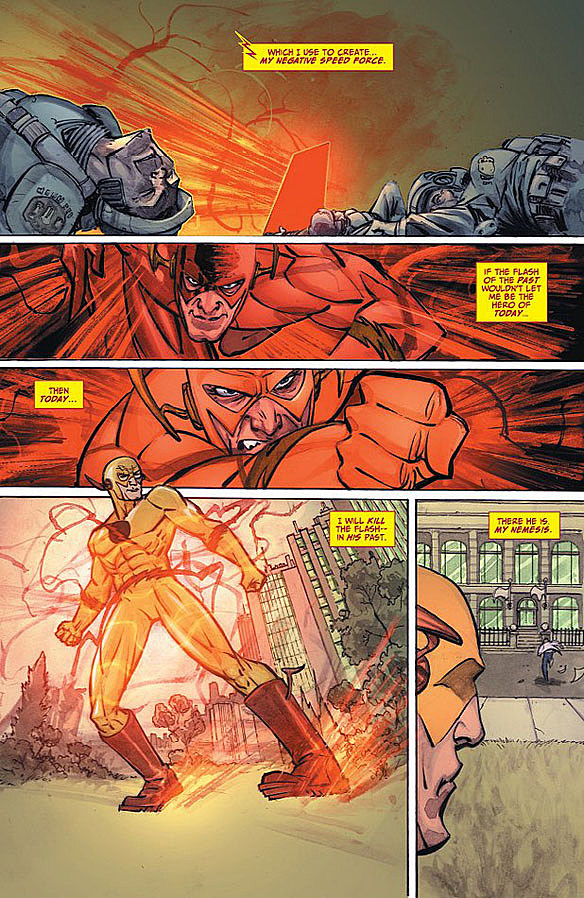
Come back next week when the last batch of Flashpoint tie-in miniseries release their first issues, including Project Superman and Hal Jordan. We also get two more one-shots with Green Arrow Industries and The Canterbury Cricket.
More From ComicsAlliance


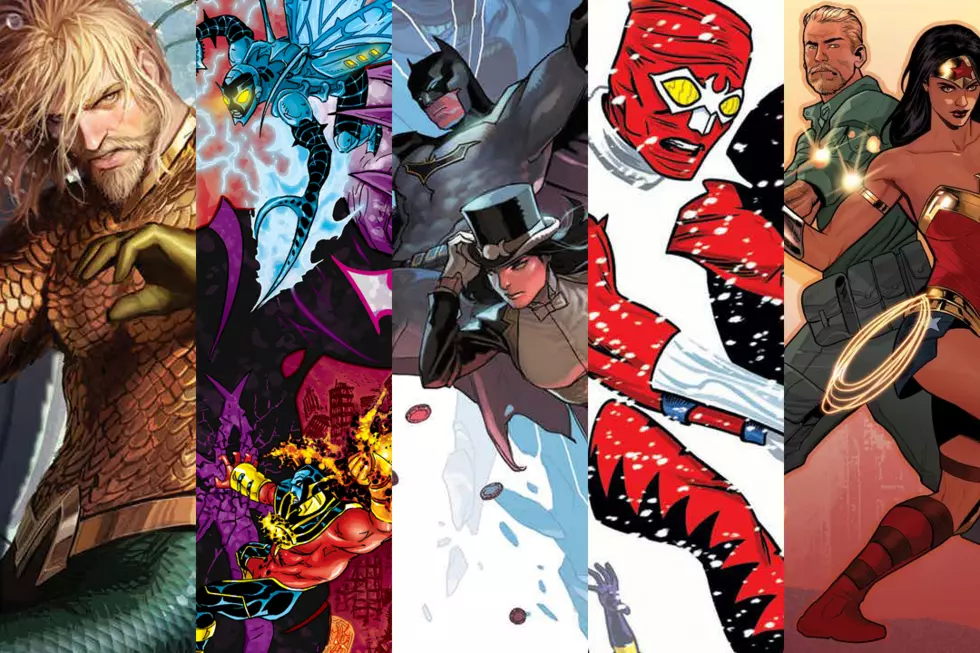

![The Odds Are Stacked And The Stakes Are High In ‘Nick Fury’ #1 [Preview]](http://townsquare.media/site/622/files/2017/03/Nick_Fury_1_Featured.png?w=980&q=75)

![The Truth About Superman Is Revealed In ‘Action Comics’ #976 [Exclusive Preview]](http://townsquare.media/site/622/files/2017/03/AC_976_0.png?w=980&q=75)
